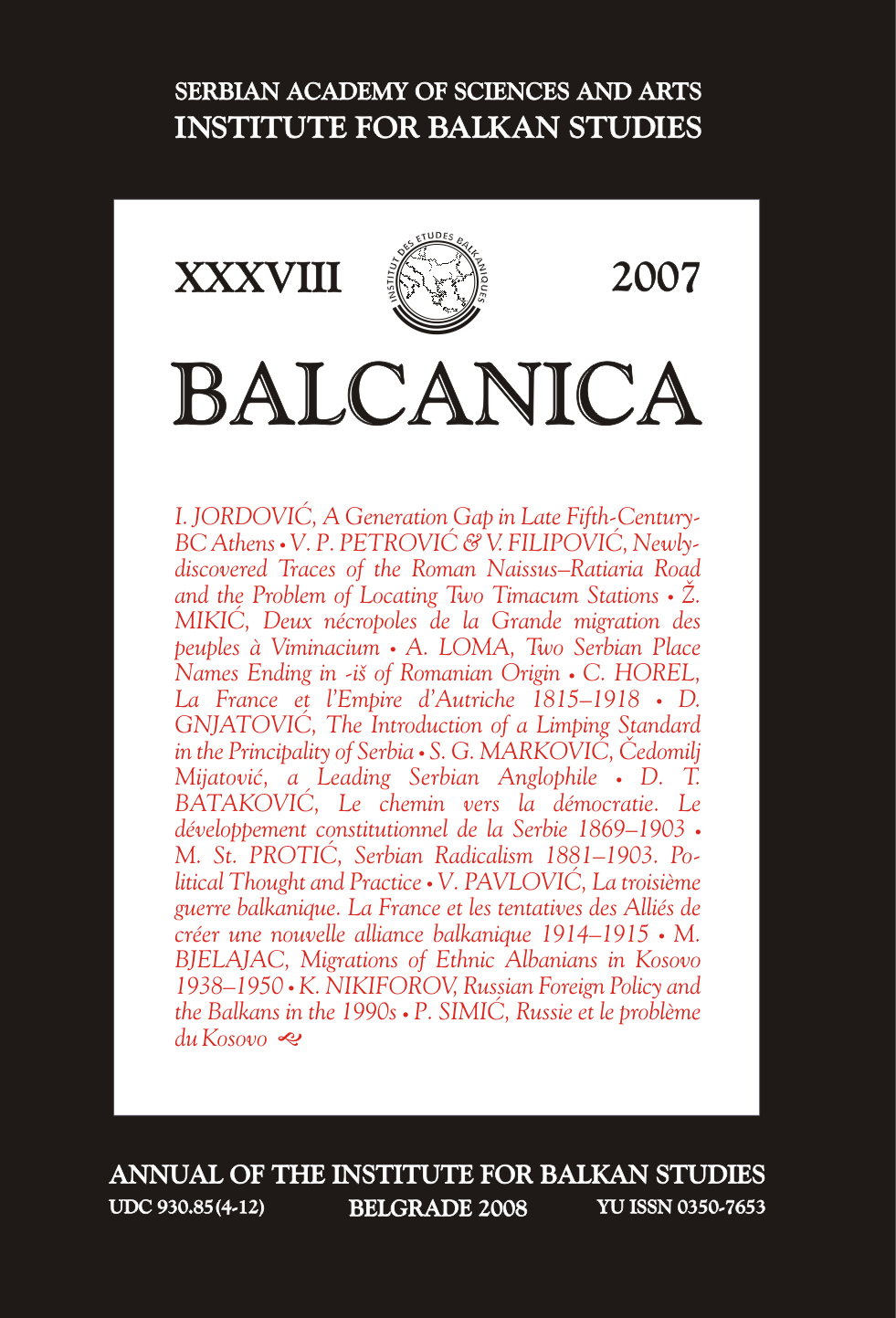Published 01.12.2007
Keywords
- SFRY,
- Kosovo,
- Serbia,
- migrations,
- Albanians
How to Cite
Bjelajac, M. (2007). Migrations of Ethnic Albanians in Kosovo 1938–1950. Balcanica - Annual of the Institute for Balkan Studies, (XXXVIII), 219–230. https://doi.org/10.2298/BALC0738219B
Copyright (c) 2007 Balcanica

This work is licensed under a Creative Commons Attribution-NonCommercial-NoDerivatives 4.0 International License.
Abstract
The Kosovo crisis and the dissolution of the SFR of Yugoslavia provoked the scholarly community to respond in many and varied ways. This paper seeks to show how difficult it was for many to “navigate” between the “rocks” of hard fact and pure propaganda, and in what ways that open-ended situation echoes in the present. A more important goal, however, is to put forward the results of my research regarding the reliability of the Yugoslav census data of 1931, which may shed clarifying light on the vastly discrepant demographic figures that are currently in use. The 1931 census data for non-Slav minorities were highly classified and intended only for internal government use in response to the needs of external defence or internal order. Migrations of the ethnic Albanians and other ethnic groups in the Kosovo region during the first half of the twentieth century led to significant shifts in ethnic proportions. It is almost impossible to form a clear fact-based picture of what had happened during the First World War and why the Orthodox Christian Serbian population dropped to 21.1% in 1921, almost twice as low as their number in 1911. On the other hand, it is debatable how many ethnic Albanians or Turks permanently emigrated or went in exile in 1918–21.According to various Yugoslav data sources, some 65,000 settlers and state officials came to Kosovo, while some 24,000 Muslims from all parts of Yugoslavia emigrated to Turkey or Albania. The Second World War brought about another significant population shift. Some 10,000 Serbs were killed in 1941, while almost all Christian Orthodox settler families (about 60,000 people) were expelled. The expulsion was followed by an inflow of Albanians from Albania proper. Only two thirds of the expelled were permitted to return after 1945. The provisional Yugoslav census of 1948 registered a significant increase for Albanians and a decrease for Serbs and Montenegrins or, expressed in percentage terms, Serbs dropped from 33.1% to 27.5% and Albanians rose from 54.4% to 68.5% of the total population in the region.The Tito-Stalin split in 1948 and strained relations with Albania led to another wave of immigrants from that country: Yugoslav historians had evidence for at least 30,000 and indications, yet to be proven, for some 75,000.Metrics
Metrics Loading ...

